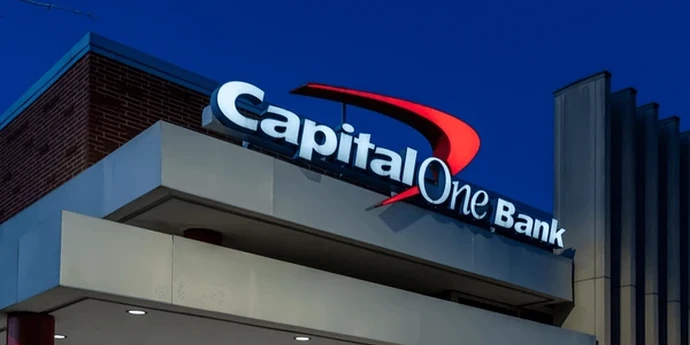Pricing strategy is one of the easiest levers CEOs can pull to increase profits in their company. For instance, Startbucks recently increased its coffee prices by 1% which resulted in a 25% net income increase in the quarter.
But here is the thing about pricing - getting it right is extremely difficult. Pricing is sensitive and companies are not always as successful as Startbucks in implementing changes. Getting it wrong can be extremely costly.
As a consequence, McKinsey and other consulting firms have got partners who are specialised in helping companies get pricing right. This is why you are likely to come across pricing problems in your case interviews. So let's step through a helpful framework for pricing cases. And let's also analyse a few examples of how different companies use different pricing as part of their overall strategy.
Click here to practise 1-on-1 with MBB ex-interviewers
Pricing cases framework
Consultants tend to look at four areas when they work on pricing projects with clients. Showing your interviewer that you know about the concepts we are laying out below will set you apart from other candidates. So we encourage you to take a few minutes to study the different questions we outline.
1. Cost-based pricing
The first option to price a product is to look at how much it costs to the company and to add a markup to that cost so the company turns a profit. For instance, if you own a small supermarket and buy Coca-cola bottles from your distributor for 80c, you might decide to resell the bottles for $1 so that your markup is 20%. Here are the typical questions you need to go through for cost-based pricing:
- What are the variable costs for the product you are pricing (e.g. Coca-cola bottle wholesale price)?
- What are the fixed costs for the company (e.g. rent, staff, etc.), and how much of the fixed costs should be allocated to the product you are working on vs. other products?
- How many units of that product are expected to sell yearly?
- What markup do we want to achieve for that product?
2. Value-based pricing
The second approach companies take to set prices is called value-based pricing. It purely focuses on how much customers are willing to pay for the product and completely ignores costs. The luxury fashion industry often uses that approach. For instance, a Prada nylon bag probably costs less than $100 to manufacture, but the company has managed to build a brand that makes some people willing to pay $1,500 for the bag. Here are the typical questions you would ask to figure out value-based price:
- What segment of the market are we planning to sell the product to (e.g. luxury)?
- What's the next best alternative to the product we are offering (e.g. other similar luxury bag)?
- What features make our product better than the next best alternative (e.g. unique because only luxury nylon bag, Prada brand, etc.)?
- How much are people ready to pay for these additional features?
3. Competitor-based pricing
Finally, companies sometimes use competitor-based pricing for their products. A recent example of this is Uber and Lyft in the US. Both companies are currently ready to price below their actual cost and below what customers are willing to pay in order to be the cheapest and win share in a growing market. Here are a few questions you would look at when doing competitor-based pricing:
- What other products can customers buy instead of ours (e.g. Lyft if you are Uber)?
- How much are our competitors charging for these products (e.g. $1 / mile)?
- Can we afford to price at the same level of than our competitors? For how long (e.g. we have $100m in funding)?
4. Overall strategy
Finally, the pricing of a product needs to be aligned with the strategic objectives of a company. Going through the following questions is therefore also important:
- What's the objective of our pricing strategy? Win market share? High profitability? Etc.
- Are there products we can cross-sell / upsell that we should take into account when pricing this specific product (e.g.: upsell colour options when selling a car)?
- Can we sell different versions of the product at different price points (e.g.: iPhone 8, iPhone 8 Plus)?
- Based on these strategic considerations, and the three approaches we have looked into about, what should the price be?
Pricing strategy examples
Now that you are familiar with the tools consultants use to think about pricing, let's walk through a few pricing examples that you can use as reference points when solving pricing case interviews.
Amazon's kindle
Jeff Bezos, Amazon's CEO, made headlines when he announced that the company would be pricing the Kindle at cost. That's right, when you buy a Kindle from Amazon, the company does not turn a profit. This might sound surprising at first but it actually makes sense. Amazon figured out that selling e-readers was just an entry point. Where the company turns a very large profit is when it sells e-books to to Kindle owners. The company's strategy is therefore to have the highest market share possible in e-readers so that it can then dominate e-book sales and capture most of the profits in that category.
Apple's skimming
Apple's iPhone pricing strategy is completely different to Amazon's. Steve Job's company has awlays considered itself a premium hardware business and has always been pricing its products accordingly. Some people refer to their pricing strategy as "skimming". In short, the company focuses on tech enthusiasts, prices high and skims most of the profits in the industry. This is what happens in the smartphone market where Apple sells only ~20% of phones but captures ~80% of the profits the industry makes!
McKinsey's fees
Have you ever wondered why McKinsey was a leader in consulting? One of the reasons is that the firm has managed to create a virtuous cycle of which pricing is an important part. McKinsey knows it's the most prestigious consultancy out there. An average client will be willing to pay a little bit more and hire McKinsey rather than another brand. This then enables the firm to pay its staff a bit more than other consultancies and to therefore attract the best people. Having the best people means it can continue doing great work for clients which reinforces its prestige. And the virtuous cycle goes on.
How to prepare for profitability case interviews
There are three approaches consultants use to think about pricing: cost-based pricing, value-based pricing and competitor-based pricing. Being aware of these tools is important. But what's even more important is to understand that pricing is usually part of a broader company strategy.
Getting familiar with the framework we have laid out above is a good idea. But as we have already mentioned in the past, you should not reuse frameworks as is in your actual interview. You should customise them as much as possible to make them relevant to the problem you are trying to solve.
We've coached more than 15,000 people for interviews since 2018. There are essentially three activities you can do to practice case interviews. Here’s what we've learned about each of them.
Practise by yourself
Learning by yourself is an essential first step. We recommend you make full use of the free prep resources on our consulting blog and also watch some mock case interviews on our YouTube channel. That way you can see what an excellent answer looks like.
Once you’re in command of the subject matter, you’ll want to practice answering cases. But by yourself, you can’t simulate thinking on your feet or the pressure of performing in front of a stranger. Plus, there are no unexpected follow-up questions and no feedback.
That’s why many candidates try to practice with friends or peers.
Practise with peers
If you have friends or peers who can do mock interviews with you, that's an option worth trying. It’s free, but be warned, you may come up against the following problems:
- It’s hard to know if the feedback you get is accurate
- They’re unlikely to have insider knowledge of interviews at your target company
- On peer platforms, people often waste your time by not showing up
For those reasons, many candidates skip peer mock interviews and go straight to mock interviews with an expert.
Practise with experienced MBB interviewers
In our experience, practising real interviews with experts who can give you company-specific feedback makes a huge difference.
Find a consulting interview coach so you can:
- Test yourself under real interview conditions
- Get accurate feedback from a real expert
- Build your confidence
- Get company-specific insights
- Learn how to tell the right stories, better.
- Save time by focusing your preparation
Landing a job at a top consulting company often results in a $50,000 per year or more increase in total compensation. In our experience, three or four coaching sessions worth ~$500 make a significant difference in your ability to land the job. That’s an ROI of 100x!
Click here to book a mock case interview coach with an experienced MBB interviewer.















